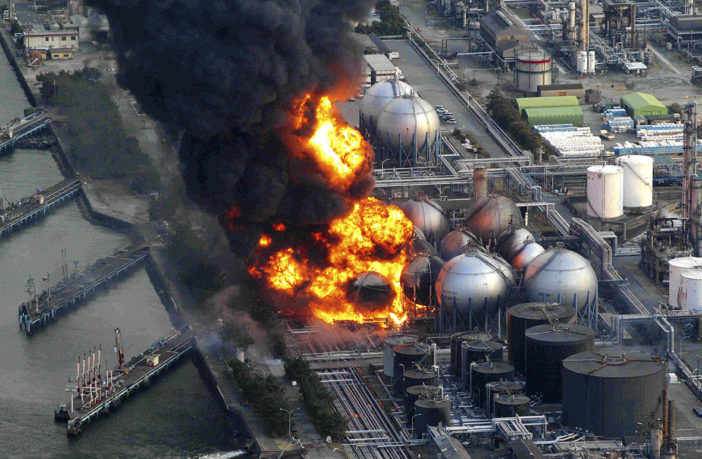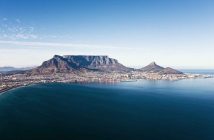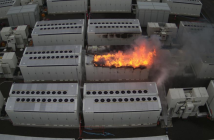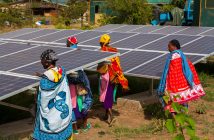Mike Kantey, media & development consultant writes on the threat of a catastrophic nuclear accident in South Africa and disaster management challenges.
As we write this, the South African government is planning to reconfigure its plans for a nuclear fleet, including a uranium enrichment plant and a fuel assembly plant.
The ultimate goal, it seems, is to export nuclear power stations and nuclear fuel to a number of countries on the African continent, including those in North Africa (Egypt), West Africa (Nigeria and Ghana), and East Africa (Kenya and Uganda).
Apart from existing uranium mining in Namibia and Niger, moreover, plans exist to open mines not only in South Africa itself, but also in Tanzania and one additional to Roessing in Namibia.
While many arguments have been raised with respect to the economic viability of such plans, few have dealt closely with some of the threats posed by nuclear power stations, spent fuel dumps, reprocessing and enrichment plants.
This article will focus solely on the threat of a catastrophic nuclear accident in South Africa, similar to those at Chernobyl (1986) and Fukushima (2011), and the difficulties of disaster management to such accidents.
Nuclear accident: power reactors
In South Africa, three sites are proposed for the new “nuclear fleet” of power stations. Each site will host two or more nuclear power reactors:
- Thyspunt, near Cape St Francis in the Eastern Cape;
- Bantamsklip, near Gansbaai in the Western Cape; and
- the already existing site of Koeberg, 28km north of Cape Town in the Western Cape.
If we had a major accident like the one at Chernobyl in 1986 and at Fukushima in 2011 at any one of the proposed sites in South Africa, the impacts on human health, agriculture and fishing (in the case of Fukushima) would be the same. Experience tells us that we would have to evacuate an area over 50km wide from the accident – permanently!the already existing site of Koeberg, 28km north of Cape Town in the Western Cape.
No food produced in that area would ever be safe for human consumption: no wheat for bread, no milk or dairy products, no vegetables and no meat or fish.
When officials discuss planning for a nuclear emergency, they talk about “Emergency Planning Zones”, or EPZs. The Disaster Management Team looks at three issues:
- normal wind direction and speed (which they measure in segments of 2X15 degrees either way from the source of the wind);
- the number of people living within 16km of the site, which they limit to under 10,000 in one segment of 30 degrees downwind; and
- the state of the existing road-transport systems.
In March 2011, in ironically the same month as the catastrophic Fukushima accident in Japan, an “Emergency Impact Response Impact Report” (Appendix E26 of the Revised Draft Environment Impact Report) was released in South Africa by the engineering company and environmental practitioner, Arcus Gibb.
In page 9 of the report, they said that the largest population within 80km of the proposed Thyspunt site amounted to over 300,000 people, based on estimate of nearly ten years ago, so it would have to be revised upwards at this time.
Given the fact that the large metropolitan of Port Elizabeth was included in the study, it would follow that its evacuation would have to be included in a realistic disaster management plan in the event of a major accident.
In their earlier submission, the St Francis Residents & Ratepayers Association had described the Greater St Francis area as including five communities: Rebelsrus, Mostert’s Hoek, Cape St Francis, Sea Vista Township, and St Francis Bay.
Strong winds from the south-west are common in the Cape St Francis area, so all five communities are downwind of Thyspunt. Thus, if a major nuclear accident were to happen at Thsypunt, these communities could be affected within ten minutes (and the major city of Port Elizabeth within three hours). Although not everyone in the greater St Francis area falls within one 30-degree wind-direction segment, everybody would rely on the only escape route: the R330.
What’s more, the existing tiny road systems would never handle the rapid evacuation of so many people in the high, tourist season.
In her letter to Arcus Gibb of 19 November 2008, then Deputy Director-General of the South African Department of Environmental Affairs and Tourism, Joanne Yawitch, made it very plain that Eskom would have to determine the emergency planning zones for the three proposed sites.
The National Nuclear Reactor Act of 1999 in South Africa makes it equally clear that such emergency plans must be in place, according to the regulator’s document “Emergency Planning and Response Requirements for Nuclear Installations” (RD-0014).
Yet in their “Emergency Impact Response Impact Report”, compiled by Mogwera Khoathane but “assisted” by pro-nuclear advocates Peter Rosewarne and Johan Slabbert, they say that “Eskom has developed a document [NSIP – 01344] …[which]demonstrates” that a reactor can be built in South Africa without the need for emergency plans.
This, they claim, is “in line with the philosophy of the EUR for LWR Nuclear Power Plants.”
What the EUR really means, however, is the European Utility Requirements. This is an organisation of European nuclear-power companies looking only after their own interests, and more specifically the export of nuclear technology to the African countries. We thus cannot allow such interests to dictate matters with regard to public safety and threats to both agriculture and the fishing industry.
Evacuation in the City of Cape Town
When it comes to the Greater City of Cape Town, moreover, the siting of the existing Koeberg Nuclear Power Station, 28km north of the city centre, as well as its proposed expansion to include two new reactors, makes it virtually impossible to evacuate the city in time.
When I was a VIP on an emergency planning exercise, I observed that the computer simulation of a major accident with the wind blowing from the north-west would result in radioactive fallout hitting the centre of the city in two hours.
Given the geographic layout of the city, there would be only three roads out: then N1, the N2, and the coastal road via Gordon’s Bay. Disaster Management teams have assured me that evacuation would be “impossible”.
As African citizens, therefore, we have to recognise that the problems associated with nuclear power generation are far more complex than the advocates would have us believe, and that the safest option would be to continue following the global trend towards truly renewable energy, such as solar, wind, and “run-of-river”microhydro.















